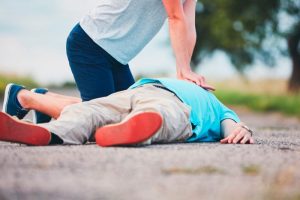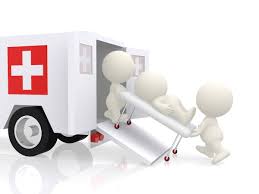The main goal in providing first aid is the ability to assist a person who is injured or suffering from a sudden attack of the disease, prior to the arrival of qualified medical assistance, such as an ambulance team. Currently, there are three types of medical care: first aid; first aid; first aid. Thus, a person providing first aid may be a stranger who has skills in first aid. The first medical aid is operational assistance to the victim in case of injury or a sudden attack of the disease, which is provided until it becomes possible to provide qualified medical assistance (until the ambulance team arrives).First Aid means the set of actions and techniques that allow the immediate attention of an injured person until professional medical assistance arrives.

First Aid Rules includes:
- – determination of the emergency situation and the need for first aid;
- – making decisions on first aid;
- – call an ambulance;
- – Providing first aid to the injured person before the arrival of the ambulance brigade.
- Keep calm, do not lose your nerves is essential to act correctly avoiding irremediable errors.
- Avoid crowds, they can hinder the lifeguard’s work at all times .
- Knowing how to impose, it is necessary to take charge of the situation and direct the organization of resources and subsequent evacuation of the injured.
- Do not move, basic and elementary norm, you should not move anyone who has suffered an accident until you are sure that movements can be made without the risk of worsening existing injuries. However, there are situations in which the mobilization must be immediate, when the environmental conditions require it or when a CPR maneuver must be performed .
- Examine the injured, a primary evaluation should be carried out, which will consist in determining those situations in which the possibility of loss of life exists immediately. Subsequently, the secondary evaluation will be carried out.
- Reassure the injured, the injured are usually scared, unaware of the injuries they suffer and need someone to trust in those moments. It is the lifeguard’s job to offer that confidence and improve the mood of the injured.
- Keeping the wounded warm, when the human organism receives an injury, the self-defense mechanisms are activated, often involving the loss of body heat. This situation is accentuated when there is loss of blood, since one of its functions is to maintain body temperature.
- Notify the health staff, advice that translates into the need to ask for help quickly, in order to establish a medical treatment as early as possible.
- Proper transfer, it is very important to end the usual practice of evacuation in a private car, since if the injury is vital it cannot be transferred and care must be taken, and if the injury is not vital, it means that you can wait for the Arrival of a properly conditioned vehicle.
- Do not medicate, this faculty is reserved exclusively for doctors
With heavy bleeding. The harness harness is the most effective way to completely stop arterial bleeding. The tourniquet is superimposed on the limb above the damaged part by about 5 cm. As a standard harness, you can use a wide strip of matter that wraps around the limb twice.
Tie a harness on one knot completely free. Then insert some stick or plate or scissors into the loop and tighten the bandage to the desired degree until the bleeding stops. Fix the object (stick, plank) with a double knot. Remember the time of application of the harness, you can not leave the harness on the limb more than two hours due to the danger of death of the limb. To reduce this danger, it is recommended to dissolve the tourniquet for several minutes after one hour (if the bleeding does not resume), and then tighten it again.
In case of injuries of the musculoskeletal system: in case of any injury, with the exception of an open fracture, it is advisable to apply ice. Cold helps relieve pain and reduce swelling. Ice is usually applied for 15 minutes every hour.
In case of poisoning: to determine the poisonous substance, as a result of which the poisoning occurred, then immediately take measures to remove the poison from the body or neutralize it with antidotes, to take measures to maintain the basic vital functions of the body. Call an ambulance. From the stomach, the venom is removed by washing or using emetics. Activated carbon has a high absorption capacity for many toxic substances (10 tablets per 2-3 liters of water).
In case of carbon monoxide poisoning: immediately remove the victim from the poisoned atmosphere to fresh air, and if possible, let inhale pure oxygen. The victim should be freed from the clothes that are constricting and preventing free breathing – remove the tie, unbutton the belt, shirt collar and so on. In case of marked respiratory distress or its stopping, start artificial respiration as soon as possible. Call an ambulance.
In case of poisoning with household chemicals: bring the victim to fresh air; when fainting, inhale ammonia, inhale and provide hot tea.
For burns: extinguish clothing in flames. Then remove it from the surface of the body. This must be done very carefully so as not to disturb the skin with rough movements. Take off all clothes is not recommended. Burn surface should be cooled with cold water. After cooling, cover the affected area with a clean, damp cloth to prevent infection and relieve pain.In case of electric shock: turn off the current (by turning the switch, switch, plug, wire breakage, discharging the electrical wires from the victim (dry rope, stick). Local damage should be treated and closed with a bandage, as with burns.
